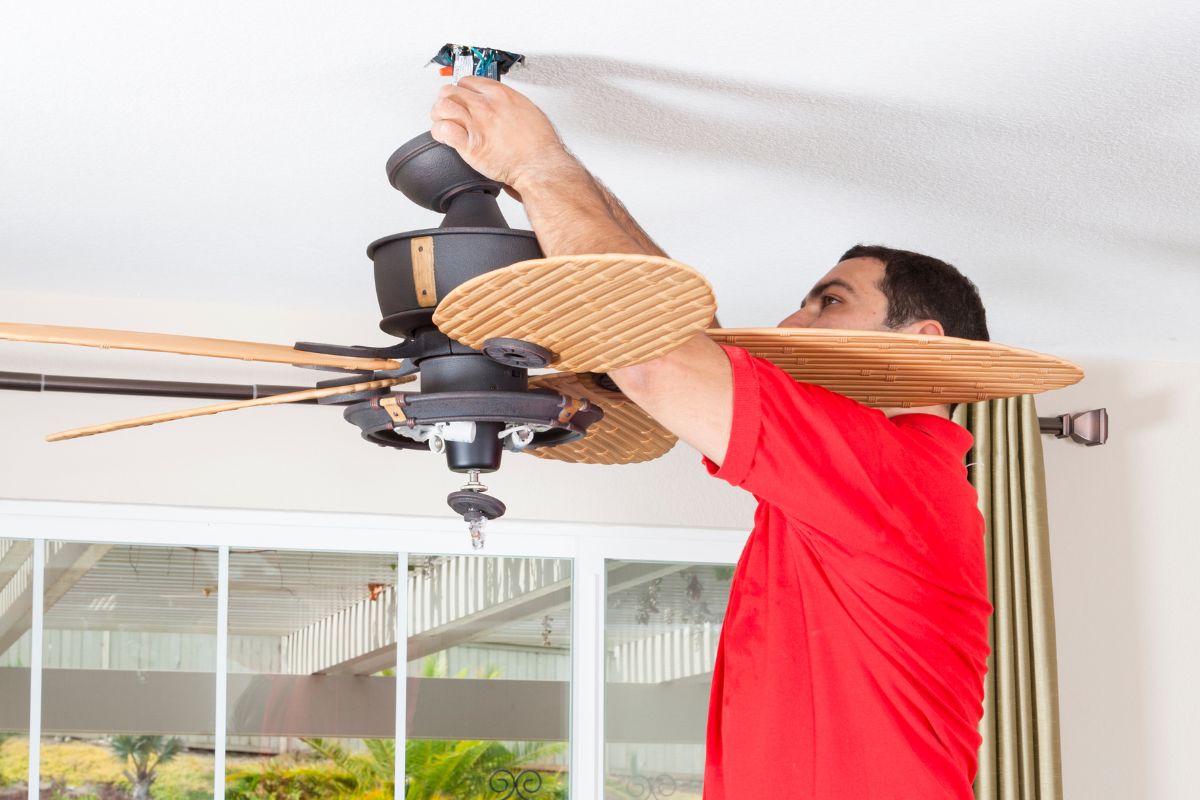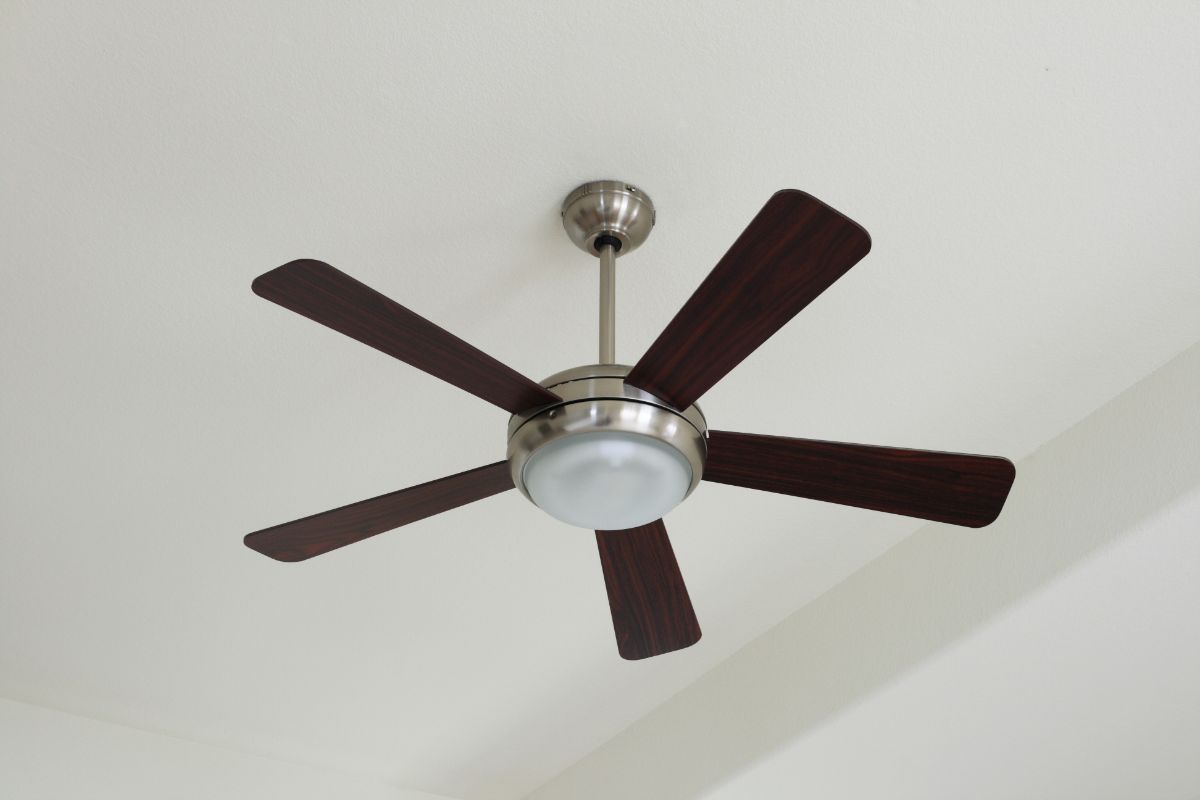Ceiling fans are a common and much loved addition in many American homes. However, as with most moving pieces of machinery, they can soon become damaged, or lose the luster they once had upon installation.
But exactly how long do ceiling fans last, and can anything be done to give them more longevity?
The Lifespan Of Ceiling Fans
Generally speaking, most ceiling fans are guaranteed a lifespan of approximately 10 years, however it is not too unusual for them to work for around 15-16 years before then need repairing or replacing.
How To Best Use Ceiling Fans
Of course, there are ways that you can use ceiling fans to ensure you get the longest lifespan out of them as possible.
Use Them When Necessary
Ceiling fans do not cool the rooms they are installed within. Instead they help to create a rapid air movement, which creates a windchill effect that helps to break warm layers of air around our bodies and cool us down a little bit.
This means that they are only effective when human beings are in the room in question. There is a misconception that ceiling fans cool down the rooms in our home, which can lead people to have them on constantly.
This couldn’t be a worse plan, and can help to expedite damage and lower the overall lifespan of ceiling fans.
Maintain Regularly
Ceiling fans might seem like a simple piece of equipment with minimal moving parts – and to some extent this is true – but they still have moving components that can become worn and damaged over time.
For this reason, having them maintained and serviced regularly is the best way to increase the overall lifespan and performance of ceiling fans.
Use Trusted Electricians
Also, when having them maintained, serviced, or repaired, it is important to only employ trusted, experienced, and well trained electricians. Do not try to fix them yourself, or indeed anyone else who does not have the knowhow.
Inexperienced people can cause more harm than good when it comes to electrical repair, and this can result in permanent damage, electrical faults, or even the need for a new ceiling fan prematurely.
How To Know When They Need Replacing

If the worst comes to the worst, and you need to replace your ceiling fan, there are several signs that can be useful indicators when the time has come.
Wobbling Fan Blades
The fan blades need to be aligned and uniform for air flow to be generated properly. If the blades are not aligned, or they continue to fall out of place and break, then it could be a sign that you are ready for a replacement.
This can also prove dangerous, particularly if the homeowners using the fan are not aware how damaged it is, and continue to use it regardless. This could result in blades being dislodged and causing injury or damage to the home.
Squeaking Sound/Buzzing Fan
All ceiling fans produce a degree of noise. This is unavoidable. However, if your fan is making a consistent, loud, unpleasant noise that doesn’t sound too healthy, then it could be a sign of a larger problem.
It could be caused by poor installation, faulty wiring or electricals, or misalignment within the mechanisms themselves.
But whatever the reason, a bad noise is a sign that maintenance and services are needed – with the worst case scenario being a new ceiling fan altogether.
Reducing Speeds
Most ceiling fans tend to have three basic speeds – ranging from low to high. If the ceiling fan is broken, or it is due to be replaced in the near future, then you might be noticing that even the highest speeds do not seem that high anymore.
This is a natural sign that things are wearing out, and could mean they either need expert attention, or that you need a new fan entirely.
Not Turning On/Off
If your fan has an electrical issue, it could mean that the fan will not turn on or off when you tell it to. This is generally a sign of more significant electrical problems – problems that should only be looked at by trained professionals.
This could be a sign that you need some maintenance, a repair, or an entirely new ceiling fan as a replacement.
Frequent Breakdowns
Freak accidents and breakages can happen, but if your ceiling fan needs constant work and repairs, then it could be a sign that you are getting ready for a replacement.
This is a natural part of owning any electrical equipment, and in this case it is usually easier and cheaper to buy a new one, instead of fighting the tide and ordering constant repairs.
Things To Consider When Purchasing
To ensure the same problems don’t occur again, or indeed to prolong the lifespan of your existing ceiling fan, there are a couple of things you should look for when making a purchase.
The Size
The size of the ceiling fan can make a surprising difference when it comes to longevity and the potential for breakages.
Shorter bladed fans tend to last longer due to a lack of weight on either end, whereas longer bladed models can be prone to more problems.
How The Operate
It is always best to see how they work and move before purchasing. This way you can know if it will be right for your needs, and if it looks sturdy and moves smoothly.
This is a small thing, but can make a big difference.
Final Thoughts
And there we have it, everything you need to know about ceiling fans and how long they last.
Ceiling fans can be a great addition to any home, due to their attractiveness, usefulness, and versatility. However, for a long lasting product that continues to work well, it just needs a little care and maintenance to keep things ticking over.

